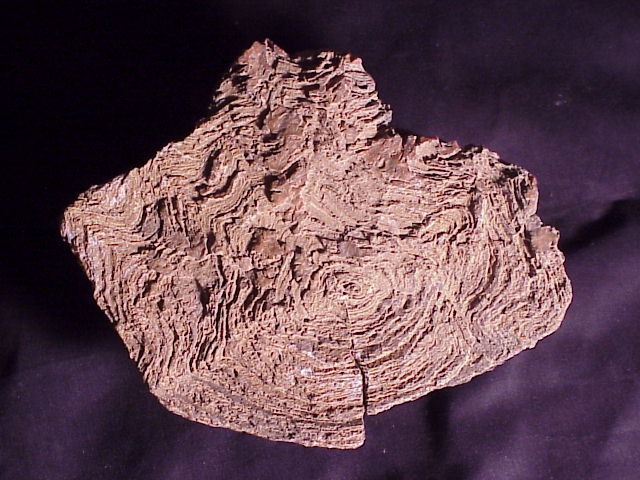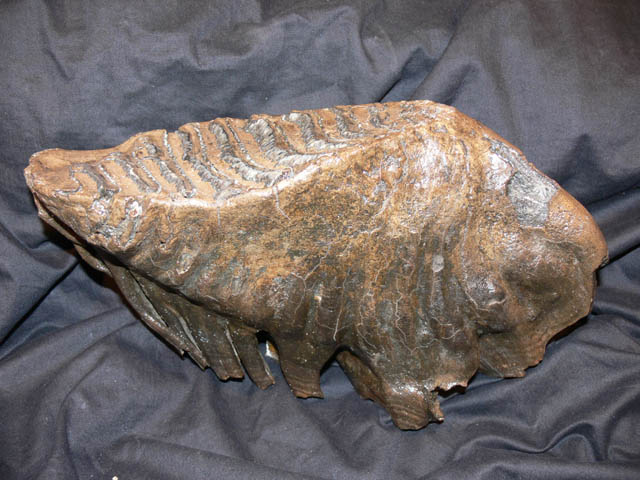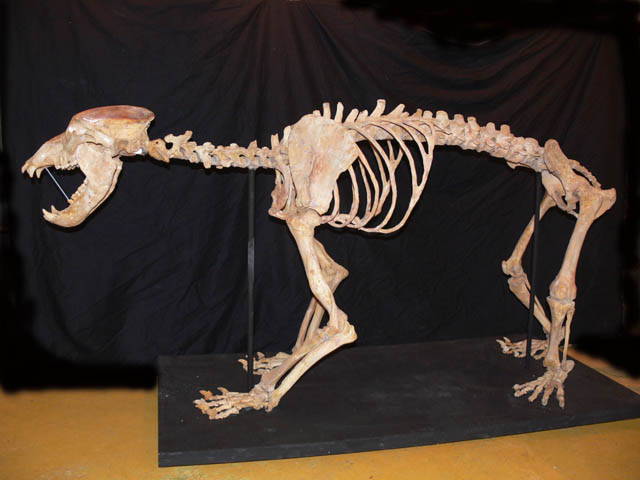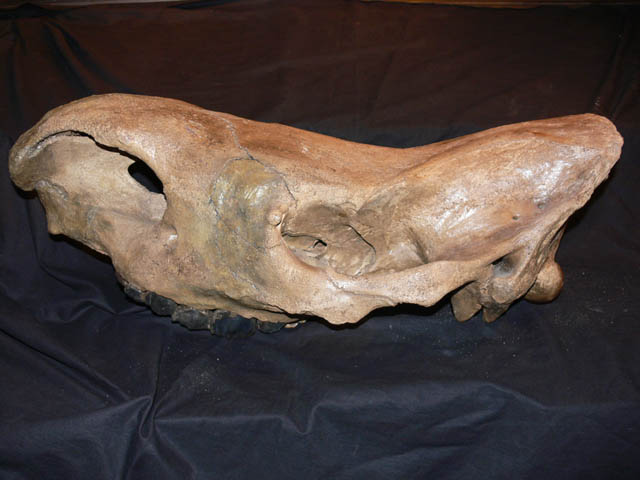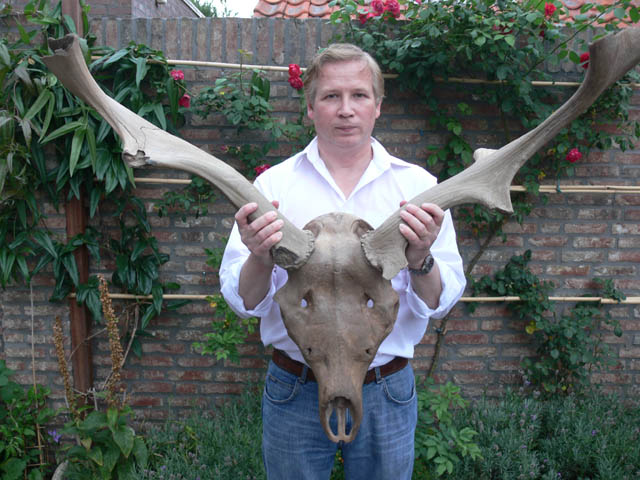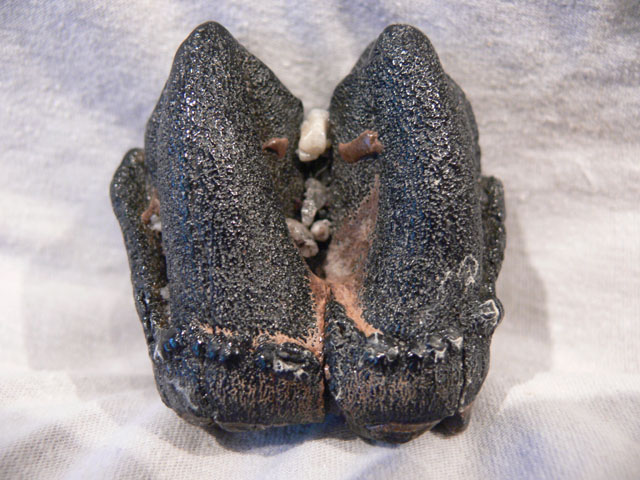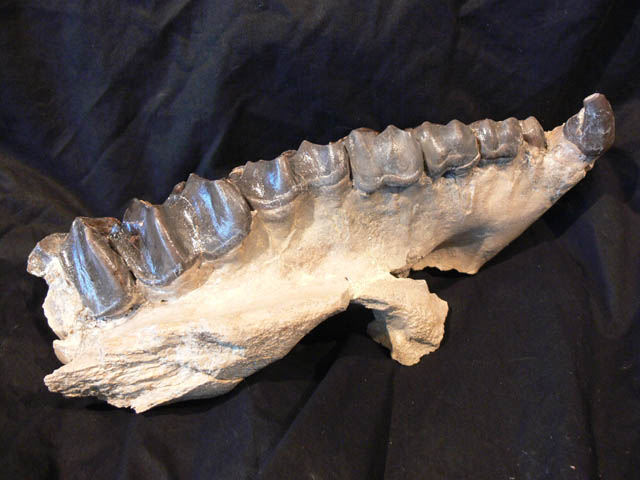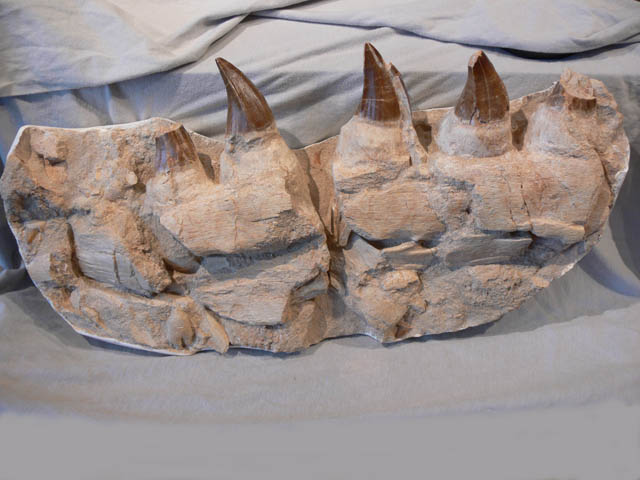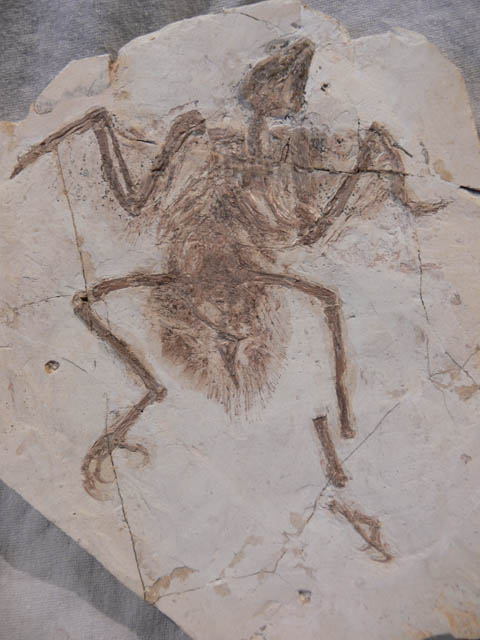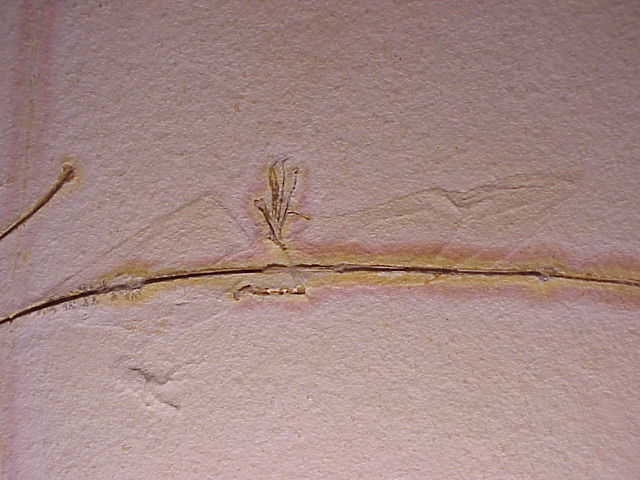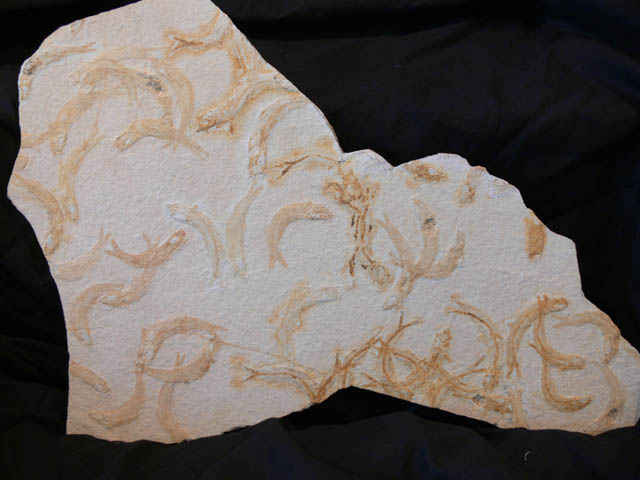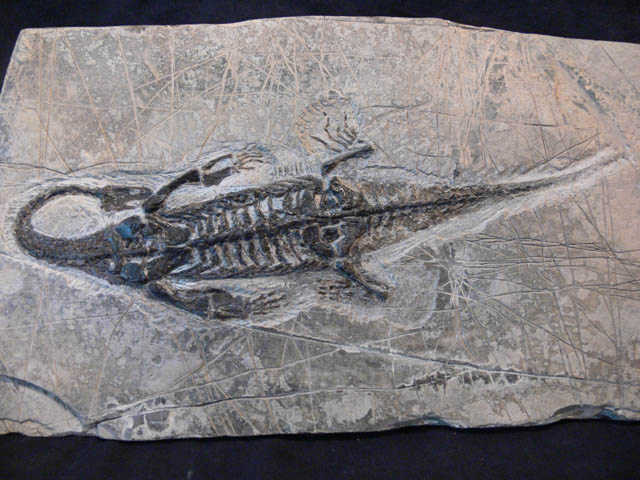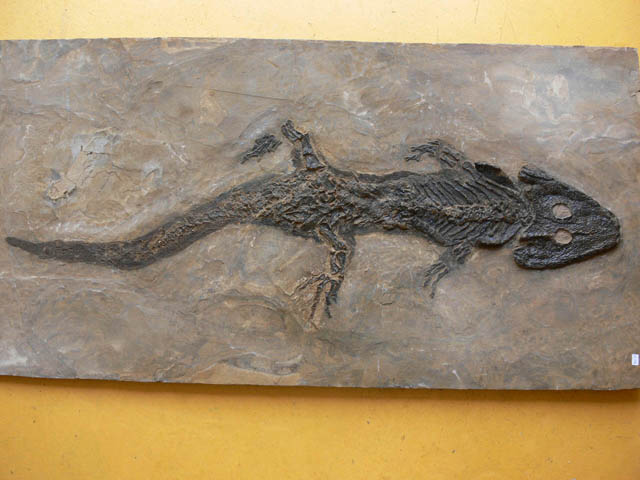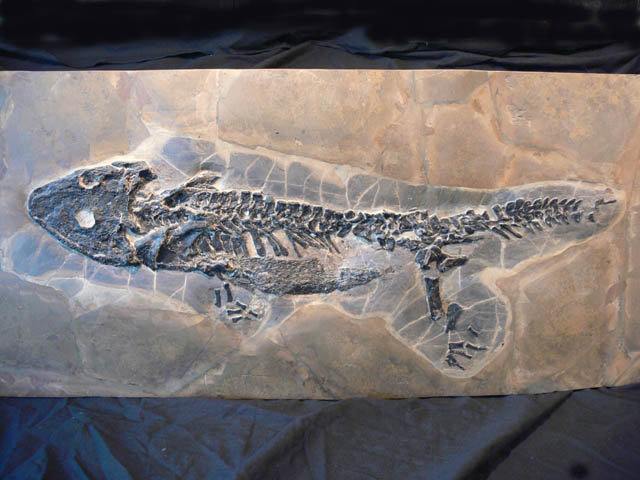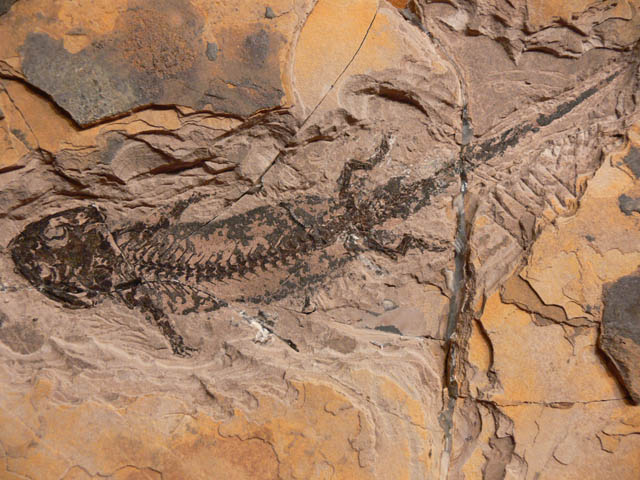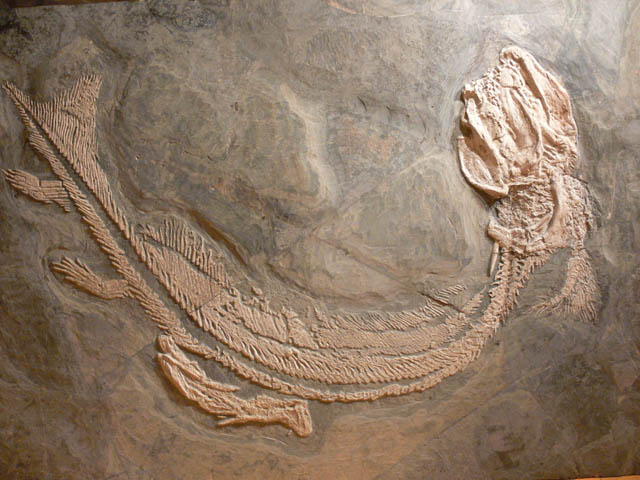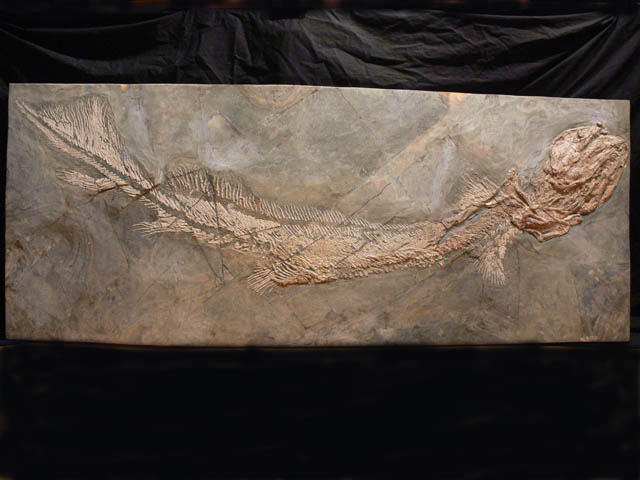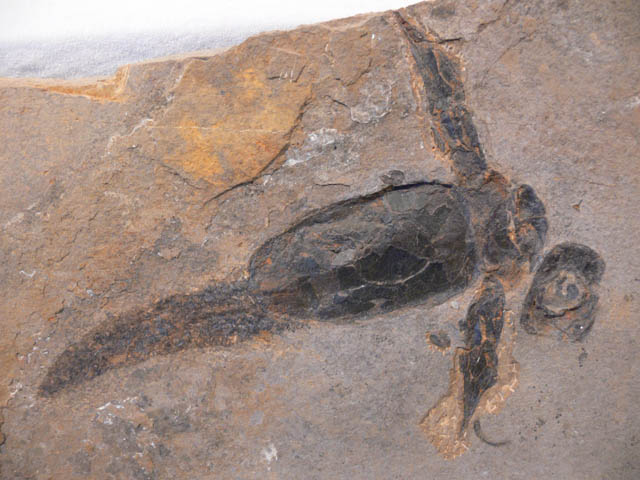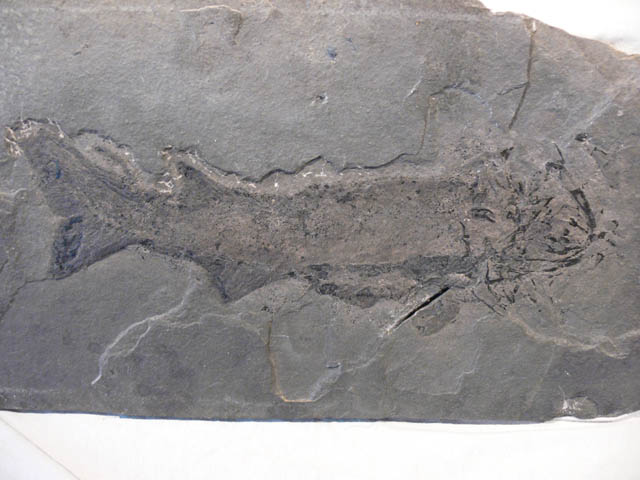© Henskens Fossils & John v. Straaten
THE PLEISTOCENEERA
The mammoth 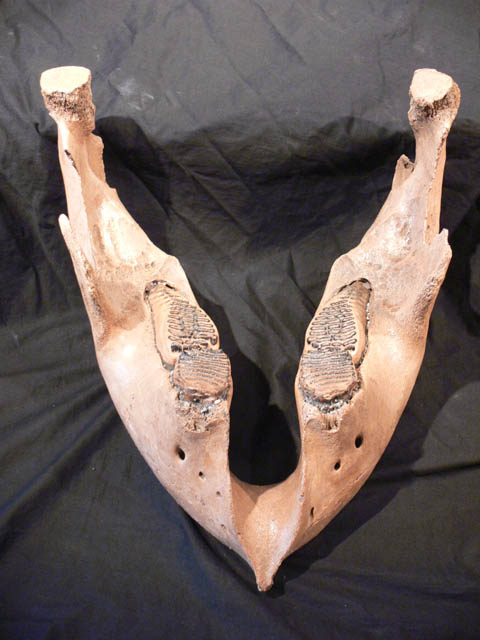
After the dinosaurs became extinct approximately 65 millionyears ago, the birds and especially the mammals fill up the empty spaces andstart an impressive march. The ancestors of the mammoths emerged around 40million years ago in Africa . These are thefirst proboscideans. The trunk resulted from the growing together of the noseand the upper lip. Elephants grew larger but the neck stayed short, so a trunkwas needed to bring food and water to the mouth. The nostril is formed by a bighole at the point of attachment, so that the skull of elephants can easily berecognized.The first elephants evolved into more than 150 different species inthe course of time, some of them with very long tusks (these are actuallyextremely elongated incisive teeth). The bloom of the elephants was in theMiocene. About 20 million years ago the proboscideans could also move intoEurope and Asia when the African continental crust came so close to Europe that a land bridge must have been formed. About four orfive million years ago in Africa the elephantsdivided into three lines. From the first one, the Loxodonta, the Africanelephant emerged. The Indian elephant evolved from the second one, Elephas. Thethird one, Mammuthus, gave rise to the mammoths. So, as is sometimes thought,the mammoths are not the ancestors of the modern elephants.
Theproboscideans (mammoths also) are classified into species mainly bycharacteristics of the teeth (e.g. the number of enamel plates). With mostmammals, a new tooth grows vertically. With elephants, however, it growshorizontally. In total elephants will have 24 teeth during their life (six percorner). If the sixth and last tooth is worn away, the animal is condemned todie of starvation. If we assume that mammoths could get as old as modernelephants, their maximum age was about 60 years.
The ancestor of allmammoths is the African mammoth (Mammuthusafricanavus), which originated in theMiddle-Pliocene and died out about about three to four million years ago. Aboutthree million years ago the first mammoths appeared in
One million years agothe climate changed. The temperature became colder, and this changed thelandscape in
Approximately 300,000years ago in
M. primigenius is the lastspecies of the Mammuthus family. If people say ‘mammoth’, they usually refer tothe woolly mammoth. About 20,000 to 30,000 years ago the woolly mammoth wasalso able to reach
Woolly mammoths arewell-known because of their finds in the Siberian permafrost (constantly frozensoil). The animals are often so well-preserved that even skin, flesh and hairremain. In Europe, fishing boats often find remains in their nets, especiallyon the North Sea between
At the end of thePleistocene, 10,000 years ago, a lot of big mammals like the cave bear, cavelion, giant deer, steppe wisent, but also the mammoth, died out. On the onehand this was caused by the changing climate (it became warmer, so that thevegetation changed), on the other hand because of the influence of humans,which rose in number and developed more efficient hunting techniques.
Only a few mammothpopulations could survive on a number of islands that were still attached tothe main land during the last ice age. When the sea level rose they could notreturn, and because of the limited food supply on the islands they evolved intodwarf forms. Remains of these so-called pygmy mammoths have been found onWrangel island, which lies about 200 km north of
The straight-tusked elephant (Elephas antiquus) lived in
Cave bears were mainly herbivores.Just like most modern bears, they probably ate dead animals now and then, butonly rarely will have killed prey themselves. They hibernated, for which theyusually used a cave (hence their name). Some animals died during their wintersleep (because of their old age, or because they had not built enough fatreserves in the autumn), and in some European caves (for example in
The ancestors ofthe woolly rhino (Coelodonta antiquitatis) came from
Officially called Megaloceros giganteus, the giant deer is an extinct deerthat lived in Eurasia, from
The steppe wisent (Bison priscus) was a bison found on steppes inEurope, Central Asia, Beringia and
Aurochs (Bos primigenius)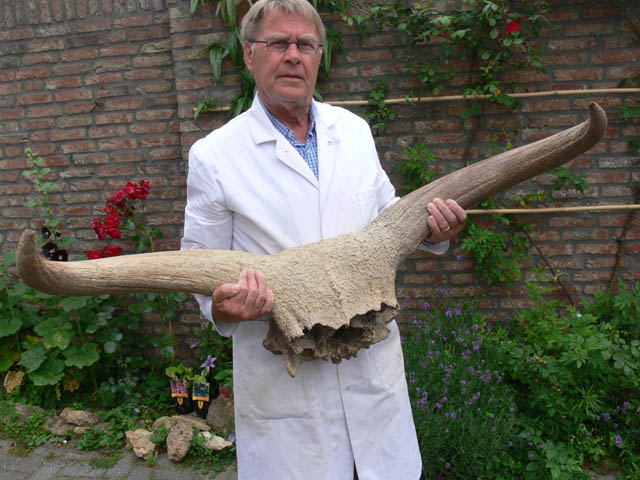
The aurochs evolved in Asiaabout 2 million years ago and reached Europe, Middle East and
Cave lion (Panthera leo spelaea)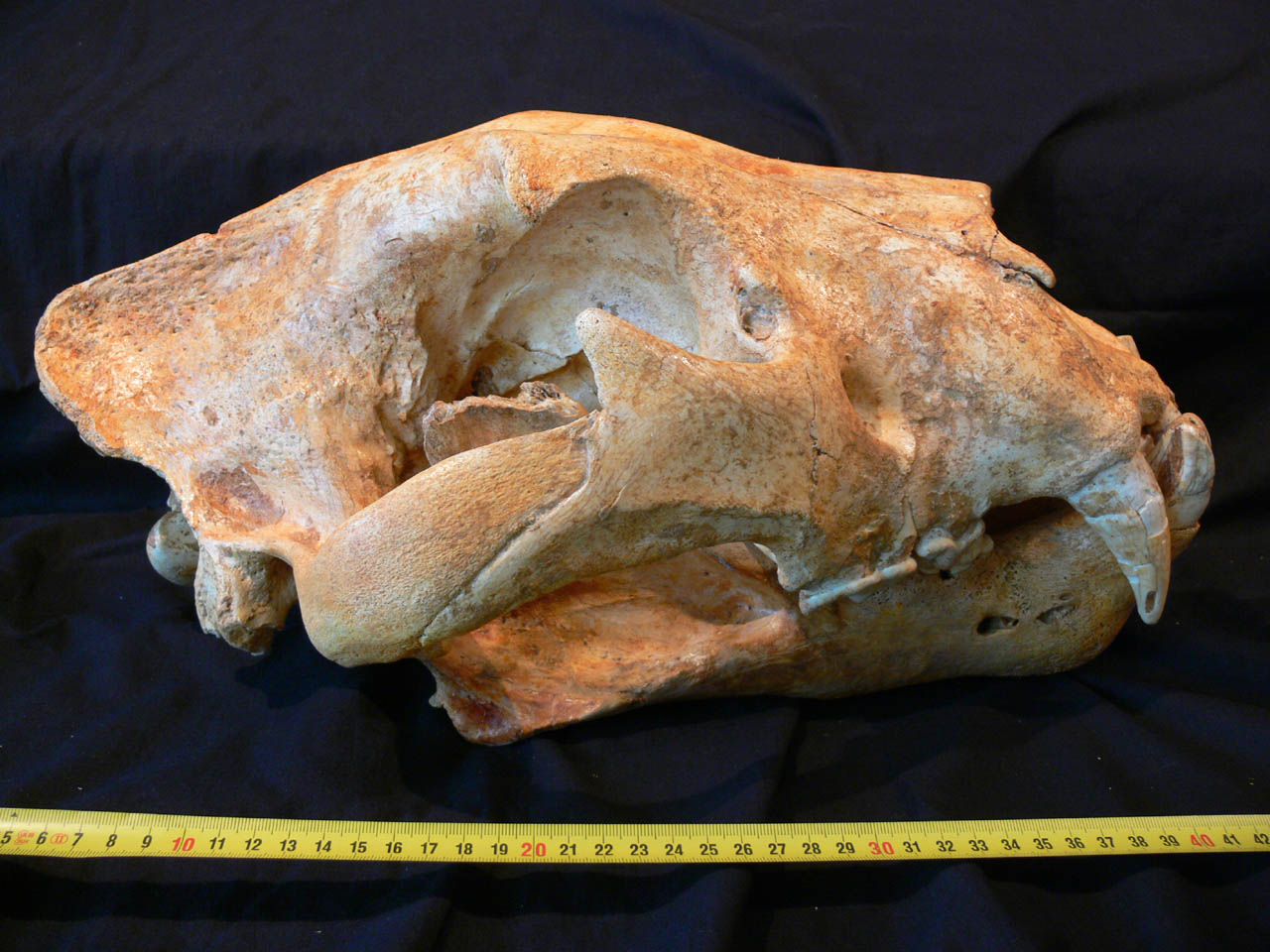
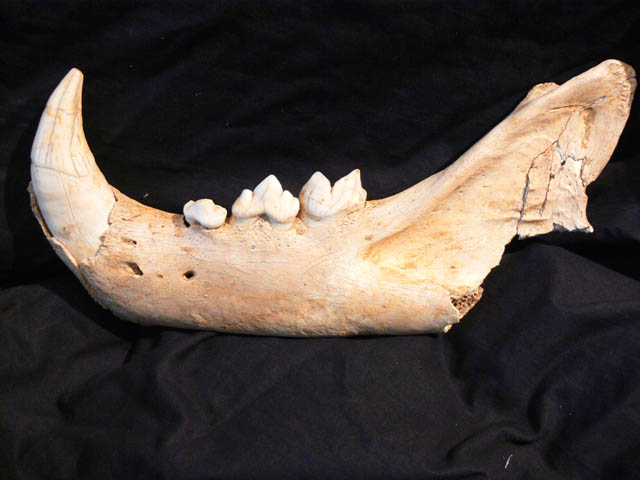
The lion evolved in
The cave lion is considered to be a subspecies of theextant lion (Panthera leo) and livedfrom about 300,000 to 10,000 years ago, during the Pleistocene era (althoughsome finds indicate it may have lived until as recently as 2000 years ago inthe Balkans). It ranged across Europe and Asia, from
They probably preyed on the large, herbivorousanimals of their time. Their extinction may have been related to the Holoceneextinction event, which wiped out most of their prey. Cave paintings andremains found in the refuse piles of ancient camp sites indicate that they werehunted by early humans, which may also have contributed to their extinction.
The cave lion is one of the biggest cats that everlived. It was about 25 % bigger than the modern African lion, and averaged 3.5m in length, with a typical male weighing between 335 and 400 kg, and a typicalfemale weighing 175 kg. The Siberian tiger and the South American Smilodon(which was the largest of the saber-toothed cats) are both smaller. Only. P. leo fossilis and P. leo atrox were a little bigger than the cave lion.
Untilthe late Pleistocene the lion was the most widespread large land mammal besidehumans. They were found in most of Africa, much of Eurasia from western Europeto
Cave hyena (Crocuta crocuta spelaea)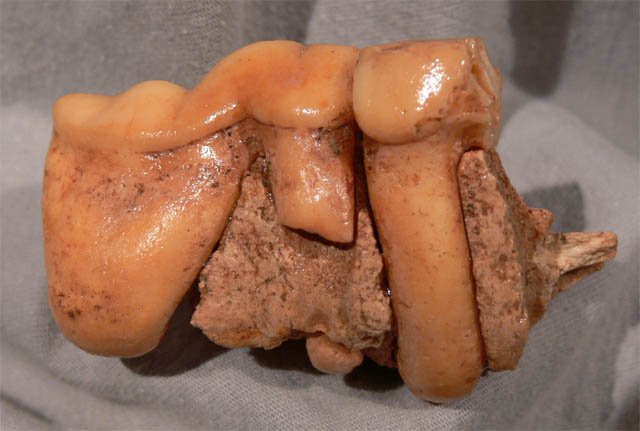
Hyenas seem to have originated about 25 million years ago (mya) from an arboreal civet-like ancestor in
The hippo is a large, mostly plant-eatingAfrican mammal, one of the only two extant species in the family Hippopotamidae(the other being the Pygmy Hippo from central
Despitetheir resemblance to terrestrial even-toed ungulates, their closest livingrelatives are cetaceans. The common ancestor of whales and hippos split from othereven-toed ungulates around 60 million years ago. The earliest known hippofossils date to around 16 mya, found in
During the Pleistocenehippos also ranged throughout North Africa and
Epileptobos groeneveldtii , Axislydekkeri and Rusa sp.
These fossils were found in
Trinil is very well known due to the excavationsof the famous Dutch geologist and anatomist Eugene Dubois (1858 – 1940). Trinilis the first hominid site that was described outside
The Kedung Brubus fauna includes a huge extinctpangolin, the proboscideans Stegodon and the fossil elephant Elephashysudrindicus, the large tiger species that is also known from Trinil, ahyena, otter, tapir, the Javan and Indian rhino and a hippo species. Thisimplies an open landscape with rivers.
Egg from anelephant bird (Aepyornis titan),Upper 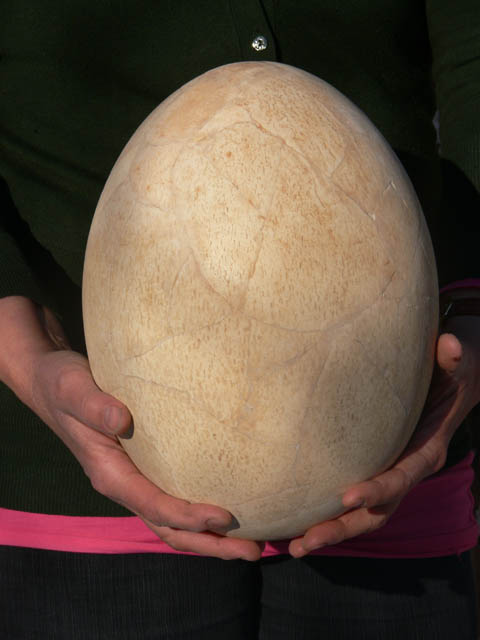
The Ratites, long-legged walking birds that can’t fly,appeared in the
Theelephant bird (Aepyornis titan) was the largest of the Aepyornis family.It could become three to four m high and weigh
The name ‘elephant bird’ comes from an old Arablegend, which tells of a large bird, the ‘Rukh’, that grabbed elephants andlifted them in the air. The giant bird in the legendary book ‘Thousand and OneNights’ with Sinbad the Sailor was probably also an elephant bird. It becameextinct in the 17th century.
Description on Marsupials
Kangaroos
A kangaroo is aherbivorous marsupial from the family Macropodidae (macropods, meaning ‘largefoot’). Besides the well-known larger species such as the red and greykangaroo, the family also includes many smaller species which include thewallabies, tree kangaroos, wallaroos, pademelons and the quokka, more than 60living species in all. The bigger species are endemic to
Kangaroos arose inthe early Miocene, but, being grazers, they prospered in the Pliocene andPleistocene, after
Baringa nelsonensis
This is a veryrare extinct species of wallaby known only from the
Macropus
The genus Macropus includes the (eastern and western)grey kangaroo, the red kangaroo, wallaroos and some wallabies.
M. giganteus (the grey kangaroo) is an extant species. However,the grey kangaroos in the Pleistocene were much larger than their moderndescendants.
M. titan is an extinct giant form of the grey kangaroo. It was flat-faced andabout twice as big as the modern grey kangaroo. Some scientists regard it as apre-dwarfing version of M. giganteus(as a sub-species, M. giganteus titan)
M. siva is a rare Macropus species from eastern
Protemnodon
Protemnodon is a genus of macropods that existed in
P. anak was one of the biggest Protemnodons, with a weight of at least 90kilos, while P. roechus was one ofthe smallest.
Sthenurus
Sthenurus is an extinct genus of the so-called short-faced kangaroo. Thesthenurines became numerous about 2 million years ago. Fourteen species are nowextinct, with a single related species (the banded hare-wallaby) surviving ontwo islands off the coast of
S. occidentalis was a leaf-eating kangaroo, about the size of amodern grey kangaroo. In order to grind tough leaves and shrubs it had powerfuljaws and striations (sharp vertical ridges) on its teeth. The name ‘Sthenurus’(Latin for strong-tailed) was derived from the first description of this groupby Sir Richard Owen in the 19th century. He noted that the bones wereundoubtedly kangaroo-like and suggestive of powerful hind limbs and strongtails.
S. gilli was a rather small sthenurine, with a body weight of about 20 kg.
Troposodon minor
This genus livedin the Pliocene and Pleistocene. They were browsers (while most other kangaroosare grazers), some could reach a body weight of 100 kg. T. minor was its smallest member with a body weight ofapproximately 40 kg.
Diprotodontids
Diprotodontids were adapted for life in a land offorests. They were browsers with simple premolars and ate soft vegetation.There were several species of diprotodons, which all lived in
Kolopsis torus lived in the late Miocene and was about 1.5 m longwith a shoulder height of 80 cm. It was one of the first diprotodontids andrelatively small. Later species were much larger.
Palorchestes parvus was characterized by retracted nasal bones, a narrowelongated rostrum and enlarged infra-orbital foramina capable of carrying largebundles of nerves and blood vessels probably supplying a trunk. It was aboutthe size of a bull.
Zygomaturus trilobus got its name from its wide flaringzygomatic arches. The Zygomaturus species were somewhat smaller than Diprotodon, and probably favoured the forested areasof south-eastern and south-western
Diprotodon optatum was the largest marsupial that ever lived. It was 3 mlong and 2 m tall at the shoulder, weighing about two tonnes. It existed from1.6 million years ago until about 40,000 years ago, through most of thePleistocene era. It inhabited open forests, wood- and grasslands, eatingleaves, shrubs and grasses. D. optatumwas first described in the 1830s by the famous British anatomist Sir RichardOwen.
Thylacoleo carnifex
T. carnifex is a member of the extinct thylacoleonid family,whose members evolved in the Oligocene and are informerly known as ‘marsupiallions’. T. carnifex was a leopard-sizedmarsupial very distantly related to wombats. It was first described by thedistinguished British palaeontologist Sir Richard Owen in 1858. It weighedabout 120 kg and was the largest mammalian predator in
Sarcophilus
Sarcophilus is a genus of carnivorous marsupial best known forits only living member, the Tasmanian Devil (S. harrisii). Three species are known, S. laniarius and S.moornaensis are only known from Pleistocene fossils. D. harrisii can now only be found on
Perameles
Perameles is a genus also calledlong-nosed bandicoots. A bandicoot is any of about 20 living species of smallto medium-sized, rat-like terrestrial marsupial omnivores of the familyPeramelidae. They feed on insects and plants and have a long, tapering snoutand elongated hind legs.
Lasiorhinus
Wombats are Australian herbivorous marsupials. They are short-legged,muscular quadrupeds, about one meter in length with a very short tail. They digextensive burrow systems with rodent-like front teeth and powerful claws. Theyare mainly nocturnal animals. Their fur color can vary from a sandy color tobrown, or from grey to black. There are three species, each around a meter inlength and weighing between 20 and 35 kg: the Common Wombat (Vombatusursinus), the Southern Hairy-nosed Wombat (Lasiorhinus latifrons)and the Northern Hairy-nosed Wombat (Lasiorhinus krefftii).
Bettongia leseur
Bettongia leseur, also known as theBoodie or Burrowing Bettong, is a small extant marsupial related to thekangaroo. It belongs to the family Potoroidae, which includes therat-kangaroos, potoroos and other bettongs. Fossils of this family appear inthe Mid-Miocene. B. leseur is asmall, rat-like marsupial with short, rounded ears and a lightly-haired, thicktail. It has a pointed rostrum and beady black eyes, hind limbs longer than theforelimbs and large hind feet. It is about the size of a wild rabbit, weighingabout 1.5 kg.
Potorus
Potorus is a small extant marsupial alsoknown as a Potoroo. Potoroosare the same size as rabbits. They have long feet and toes to hop and have greyfur. They come out at night to feed on seeds, fungi and insects. The potoroosweight is 1.5-2.5 kg.
Megalania prisca
Megalania was a giant varanid lizard also known as the Giant Goanna, that livedin the Pliocene and Pleistocene. It grew to lengths of at least 5 metres,perhaps 7. At about 600 kg, it was several times as heavy as the largest livinggoanna, the Komodo Dragon of Indonesia (Varanuskomodensis). It was probably an ambush killer and scavenger. Megalania is known only from fragmentarymaterial. It is the largest known land-dwelling lizard and belonged to thefamily that includes the goannas or monitor lizards. It appears to have becomeextinct around 40,000 years ago (although numerous people claim to have seenvery large lizards in
Tiliqua scincoides
Members of the genus Tiliqua arealso called blue-tongued skinks. It contains some of the largest members of theskink family. They are commonly called blue-tongued lizards in
Emydura
Emydura is a genus of extant turtles,also called Australian short-necked turtles. The six species of the genus Emydura arewebbed-footed and semi-aquatic river turtles. They are characterized byunusually short necks.
Pallimnarchus pollens
Pallimnarchus is an extinct genus ofcrocodile from the Pliocene and Pleistocene of Australia. The genus consists ofonly one species, P. pollens. It wasabout as big as a modern saltwater crocodile. It had conical ziphodont(serrated and curved posteriorally) teeth and probably specialized in ambushingprey like kangaroos and diprotodons in shallow water.
THE TERTIARY ERA(Pliocene, Miocene, Oligocene, Eocene and Paleocene) © Henskens Fossils & John v. Straaten
Carcharoclesmegalodon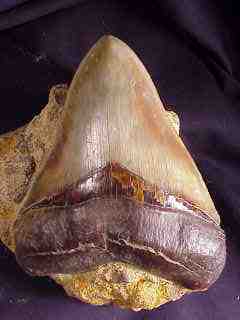
Carcharodon was a whiteshark species that lived in the Miocene and Pliocene. It must have grown toabout 15-18 m in length. However, this is difficult to tell exactly, since ashark skeleton consists of cartilage that hardly fossilizes since it is verysoft. What we do find a lot from sharks are their teeth. Not only because theyare hard and have a big chance to be preserved, also because a shark constantlyreplaces them. A shark has several rows of teeth, and can produce up to 15,000teeth during its life. Carcharodon teeth can be 20 cm long. The height of itswide open jaws must have been about 1.5 m. Its main food source were probablywhales.
Cainotherium
The Cainotheriidae are small artiodactyls(even-toed hoofed plant-eating mammals) that suddenly appeared in the LowerOligocene of western Europe. Cainotherium looked like a hare. This isprobably because it lived the same life style, a good example of convergentevolution. It is not related to hares, but has evolved similar adaptations asit occupied similar niches. Cainotherium became extinct in the UpperMiocene and left no descendants.
Messelornis cristata
Messelornis cristata is a fossil rail-likebird from the famous Messel Pit fossil site in
Collecting fossils from the Messel site requires aspecial technique. Once is fossil is discovered (by splitting the thin shaleslabs) it needs to be kept wet. If the shale is allowed to dry out, then thefossil disintegrates. Then, still keeping the fossil damp, the shale iscarefully removed from around the bones. Then the bones are coated with resinto hold them in place. Now, the whole slab is turned over and the other side ofthe fossil exposed in the same way. Eventually, the fossil is completely freefrom the rock and encased in resin.
M. cristata was about the size of a moorhen and earlier they were also classified inthis group, the rails. It now appears, however, that the Messelornithidae aremore related to the present crane family (Gruiformes). They had short wings,long legs and short toes. The tail feathers were long. On the head they had ahelmet-shaped crest. The full skeleton is 25 to 30 cm in size.
The fishes Atractosteus starusi, Amphipercamultiformis, Thaumaturus intermedius and Palaeoperca proximafrom the Fish page also come from this site.
Palaeobatrachus
The Palaeobatrachidaeis an extinct group of frogs. They lived mainly from the Eocene throughPliocene in
Phareodustestis, Diplomystus dentatus, Knigthia eocaenea and Priscacara serata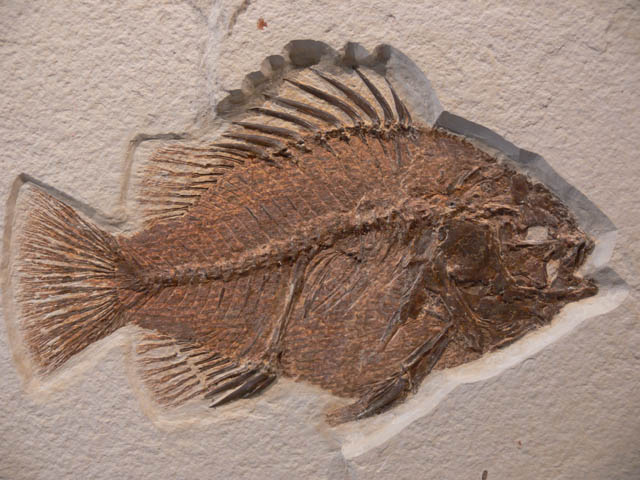
All these fishes come from the world-famous fossil locality of theGreen River Formation in
Titanotheriidae, also called Brontotheriidae, isa family of extinct mammals from the order Perrisodactyla, that includeshorses, rhinos, and tapirs. They looked like rhinos but are probably related tohorses. They lived in the Eocene and Oligocene. The term “Brontothere” means“thunder beast” in Sioux Indian language. Brontotheres have four toes on theirfront feet and three on their hind feet. Their teeth are adapted to cutting leaves.The history of this group is well known due to an excellent fossil record inthe
THECRETACEOUS ERA © Henskens Fossils & John v. Straaten
Aegyptosaurus
As its name suggests, Aegyptosauruswas discovered in
Crocodilus spenceri and Phosphatosaurus gavialoides
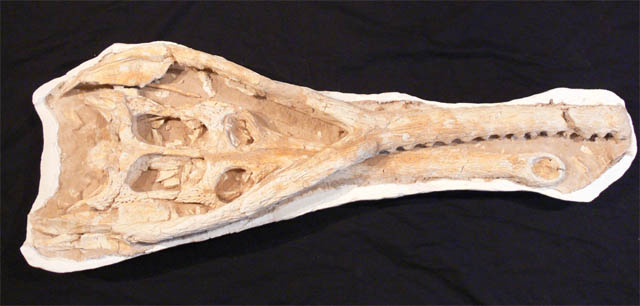
Alligators, caimans, gavials, and crocodiles belong tothe family Crocodylidae. Although this family has existed since the upper Triassic,over 200 million years ago, reptiles which can definitely be classed as modern Crocodylidaeonly appear in the fossil record about 80 million years ago. The groupCrocodylia consists of modern crocodiles, alligators, and gavials. Crocodilianshave a long head with nostrils at the tip of the snout, four legs projectingsideways, heavy scales, a muscular tail, and partially webbed hind feet.Crocodilians are semi-aquatic; they spend much of their time in water, but mustlay their eggs on land. Their extinct relatives share many skeletal featureswith modern crocodilians, but were quite different. Some were small (less than50 cm), lightly built, and probably preyed on insects and very small reptiles.Others even walked on two legs, or had hind limbs longer than their forelimbs,betraying their bipedal ancestry. The biggest croc that ever lived was Sarcosuchusimperator. It lived about 110 million years ago in what is now northern
Elasmosaurus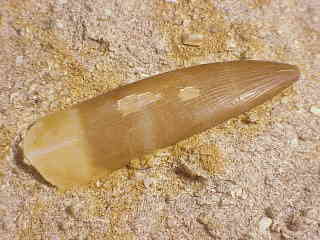
Elasmosaurus was a plesiosaur with an extremely long neck thatlived in the world sees in the late Cretaceous. Its name means “thin-platedlizard”. This is because it had platelike bones in its pelvic girdle. It is thelongest plesiosaur that ever lived (about 14 m in length). More than half ofits length was neck, which had more than 70 vertebrae, more than any otheranimal. It had a large body and four flippers for limbs, a small head withsharp teeth, and probably ate fish, belemnites and ammonites. It was describedin 1868 by Edward Drinker Cope from fossils found in
Mosasaurs were carnivorousmarine reptiles with flippers that likely descended from varanid lizards. Theyare named after the Dutch river Meuse where the fossils were first discovered. Thisriver runs next to the city of Maastricht, after which the period they lived in(Upper Cretaceous) was named (Maastrichtian). These fossils were from thespecies Mosasaurus hoffmanni. Mosasaurs dominated the shallow seasworldwide during the late Cretaceous. They were top predators that ate almostanything, even ammonites. Some fossil ammonites cary the bite marks ofmosasaurs.
Mosasaurus was the largest ofall mosasaur types known. It could reach a length of 18 m, with a skull ofalmost 2 m. The lower jaw is loosely hinged to the skull with a moveable jointon each side just behind the teeth. This loose joint must have permitted theanimal to swallow large prey, much as some living snakes do. Finds of mosasaurembryos inside the skeleton of adult specimens indicate that mosasaurs, justlike ichthyosaurs, were viviparous and gave birth to live young.
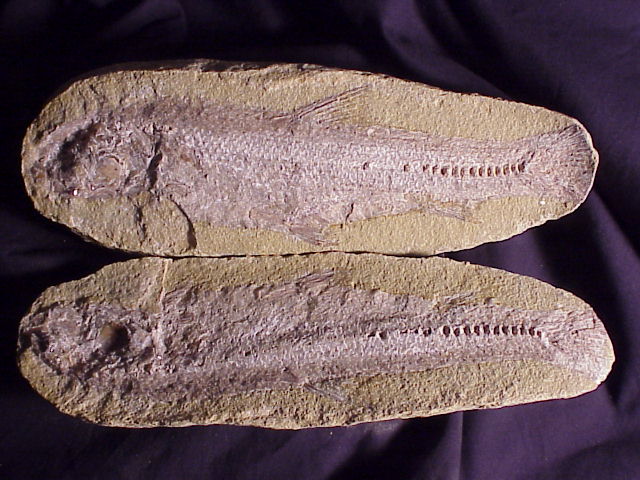
These fishes come from the Santana Formation, innortheast
Coelacanths
Just likeArchaeopteryx, Confuciusornis is proof that birds evolved from reptiles.Confuciusornis is about 25 million years younger than Archaeopteryxand is the oldest known bird to have a toothless beak. However, the wings stillhave three claws. It must have been a better flyer than Archaeopteryxbecause it had lighter bones (in modern birds the bones are completely hollowto save weight). The males were a little larger than the females and had twovery long, narrow tail feathers. Confuciusornis is found in depositsfrom the Lower Cretaceous of the
Allopleuron
Turtles are an ancient group of reptiles. The earliestturtles were enormous, tortoise-like animals. Millions of years of evolutionresulted in some species adapting to life in the oceans. The earliest knownmarine turtle fossils are about 110-150 million years old. Allopleuronis known from Upper Cretaceous deposits of North America, northern Africa and
THE JURASSIC ERA © Henskens Fossils & John v. Straaten
Pterosaurs (‘flyingreptiles’) evolved approximately 230 million years ago. They developed in thesame period as the dinosaurs, at the end of the Triassic, and also had the sameancestors (the archosaurs, from which the crocodiles also evolved). The wing isformed by a greatly elongated fourth finger. From the top of this finger, aleathery skin stretched towards the thigh bone of the hind legs. The otherthree fingers formed a claw halfway the wing. The fifth finger was stillpresent in early species (although already greatly reduced), but was gone inlater forms. The wings could be folded backwards, so that pterosaurs were ableto walk on their hind legs on the ground, supported by their wing claw.
More than 120different species are known. The smallest had the size of a sparrow, thelargest (Quetzalcoatlus) had a wing span of about 12 m. Just as inbirds, pterosaur bones were hollow to save weight. It were the first vertebratesthat were able to fly. Most species lived from insects and fishes, which theycaught from the surface waters of the seas. Pterosaurs were probably active,warm-blooded animals. The ones with a large wing span must have been able toglide for a long time by using the thermal currents (upward movement of heatedair). Just like many other reptile families, they became extinct at the end ofthe Cretaceous.
Pterosaurs arenot the ancestors of birds. Birds developed in the Jurassic from small,carnivorous reptiles (probably dinosaurs), and pterosaurs and birds stillshared the skies for almost 100 million years.
Rhamphorhynchus had a long tail. Its namemeans “beak snout”. It had a wingspan of 1 m and a long tail stiffenened withligaments which ended in a vane. It probably ate fish and it is believed thatone of the ways it hunted was by dragging its beak in the water, catching fish,and tossing them into its throat pouch, a structure similar to that ofpelicans, which has been preserved in some specimens. Although fossils havebeen found in
Scaphognathus had a skull length close to 12 cm and awingspan of about 90 cm. It had a characteristically broad jaw, relativelyshort tail and short wings in comparison to other rhamphorhynchoids and a broadsternum. Compared to Rhamphorhynchus, the teeth pointed downward instead of forward.
Aroclesaltivelis, Allothrissops salmoneus, Allothrissops mesogaster, Tharsis dubius,Ascalabos voithii, Pachytrhissops, and Leptolepides sprattiformis
All these fishes come fromthe world-famous fossil Lagerstätte of Solnhofen near
Horsehoe crabs are distant relatives of spidersand probably descended from the ancient eurypterids (sea scorpions). Theyevolved in the Cambrian with other primitive arthropods like the trilobites.Horseshoe crabs are one of the oldest classes of marine arthropods, and areoften referred to as "living fossils", as they have not changed muchin the last 350 to 400 million years. Limuluspolyphemusis one of the few surviving species of Limulus, and it closely resembles Mesolimuluswalchi. They are found in the Gulf ofMexico and along the northern Atlantic coast of
Hyphalosaurus lingyuanensis
Pseudorhina minor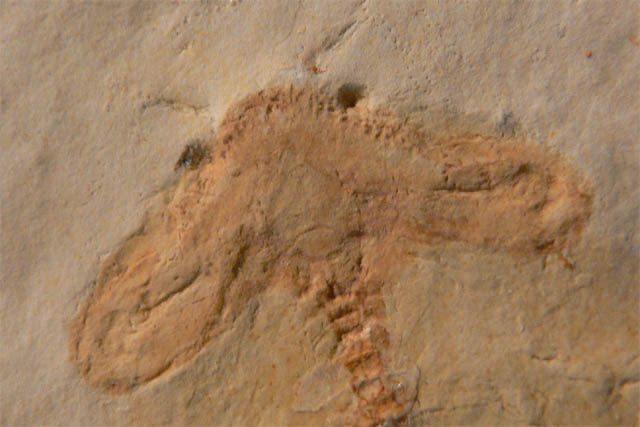
Pseudorhina is related to the recent squatinids, the so-calledangel sharks, bottom-dwelling sharks with a ray-like shape. They are an ancientlineage, first appearing in the fossil record about 150 million years agoduring the late Jurassic period. The remains of articulated angel sharks areknown from the marine deposits of Solnhofen, southern
The genus Pseudorhina is extinct but it has closerelationships with the genus Squatinawhich has 15 extant members.
Ichthyosaurs
Ichthyosaurs werereptiles of which the ancestors lived on land, but later decided to go back tosea (possibly under pressure of the dinosaurs, which dominated on land). Theirbody shape looks a lot like that of a dolphin (but with a vertical instead of ahorizontal tail, and four instead of two flippers). Just like dolphins (mammalswhich later also returned to sea), ichthyosaurs had lungs and had to come tothe surface now and then to breathe. More than 80 species are known, of whichthe biggest one (Shonisaurus) could reach
They lived on fish, ammonites and belemnites. Ichthyosaurs have, in comparisonto the rest of their body, the biggest eyes of all animals. Species of thegenus Temnodontosaurus even had the biggest eyes ever, with a diameterof
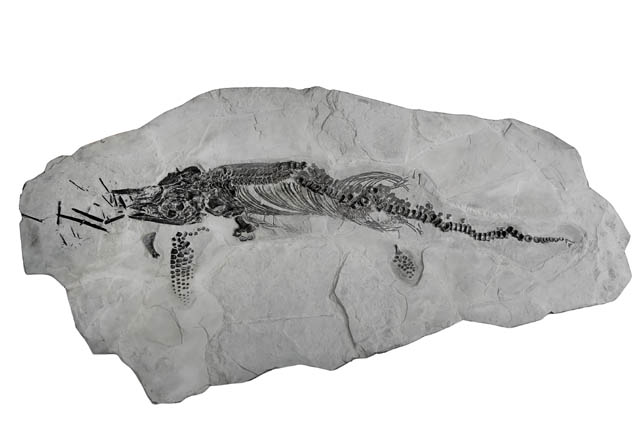 Stenopterygiussp., Lower Jurassic,
Stenopterygiussp., Lower Jurassic,
Since the skeleton is as good as complete, thisichthyosaur must have drifted at the surface only for a short while after itsdeath, before it started to sink. The deeper it sank, the more the chest andlungs were compressed. The body’s centre of gravity moved into the direction ofthe head. As a consequence, such ichthyosaurs often sank towards the sea bottomhead first, with a speed of ± 1.5 m/s. When it collided with the sea floor, thesnout broke into several pieces, and also the skull was damaged. Approximately
This ichthyosaur is mentioned in a Germanscientific article about ichthyosaurs which sank to the sea bottom head first(Der Ichthyosaur vom Hauensteiner Nebelmeer, H. Hänggi, 2007, NaturforschendeGesellschaft des Kantons Solothurn).
THE TRIASSIC ERA © Henskens Fossils & John v. Straaten
Nothosaurus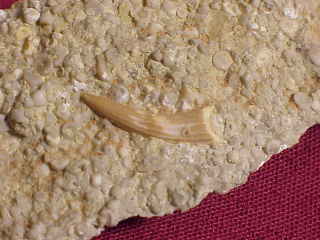
THE PERMIAN ERA © Henskens Fossils & John v. Straaten
Archegosaurus belongs to theLabyrinthodontia, a group of extinct amphibians. They were the first vertebratesto conquer land in the Devonian. The Labyrinthodontia evolved from the Crossopterygii,a class of lobe-finned fishes, consisting of lungfish and coelacanths. In a group of lobe-finnedfishes living in the Devonian, the swim-bladder evolved into lungs, when, forunknown reasons, they left the sea water. Archegosaurus could reach alength of 1 m. Together with Sclerocephalus and Actinodon itbelonged to the biggest amphibians of
Discosauriscus was an amphibium that lived in the early Permian.Lots of its fossils have been found in deposits of fresh water lakes in centraland western Europe, especially in the
Sclerocephaluswas a salamander that lived about 280 million years ago (in the Lower-Permian)of what is now south-western
Micromelerpeton was anamphibian that lived in the Permian in what is now southwestern
Orthacanthus is a fresh water shark that livedin the Upper Carboniferous and Lower Permian of Europe and
Fossils ofcomplete sharks are rare as their skeleton is from cartilage which is muchsofter than bone.
THE CARBONIFEROUSERA © Henskens Fossils & John v. Straaten
Ferns are vascularplants that differ from the more primitive lycophytes in having true leaves,and from the more advanced seed plants in lacking seeds. Unlike the othervascular plants, the flowering plants and conifers, where the adult plant growsimmediately from the seed, ferns reproduce from spores. Ferns are (relatively)delicate plants that only grow in areas with moist conditions. They favoursheltered areas under the forest canopy, along creeks and streams and othersources of permanent moisture.
Ferns first appearin the fossil record in the Lower Carboniferous, meaning they were alreadyaround for two hundred million years before the flowering plants evolved. Bythe Triassic, the first evidence of ferns related to several moden familiesappeared. The first modern families evolved in the Upper Cretaceous.
THE DEVONIAN ERA © Henskens Fossils & John v. Straaten
Rhinopteraspis dunensis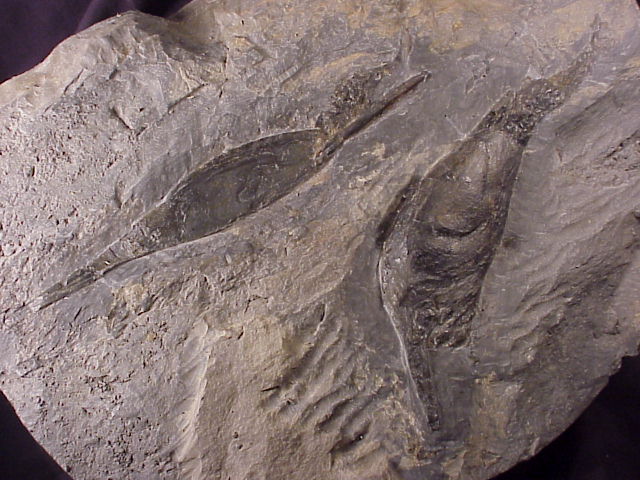 Coccosteus cuspidatus
Coccosteus cuspidatus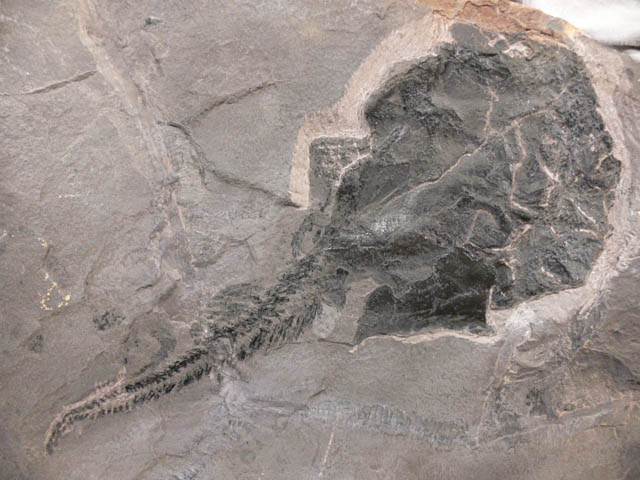
Armored fishes
Rhinopteraspisis an Agnathan. Althoughlacking paired fins, the pteraspids were probably powerful swimmers. Stability was provided by the wing-like outgrowths from the back of the headshield. A large spine over the back acted as a kind of dorsal fin whiletwo rigid 'wings' or keels functioned as pectoral hydrofoils. Thelong, flexible tail was also hydrodynamic, with the lower lobe elongated toprovide lift at the front of the body during swimming. Additional lift wasprovided by the elongated snout, which was drawn out into a bladelike'rostrum', below which the mouth opened. The rostrum may have served a dualpurpose, both hydrodynamic and used to probe the mud and sediment for smallorganisms.
Coccosteusis a genus of arthrodire placoderm (“arthrodire” means “jointed neck”, withwell developed neck joints between head shield and trunk shield). Its fossilshave been found throughout Europe and
Pterichthyodesis a genus of placoderm fish from the Devonian period. It had heavily armored heads and front bodies, while theirtail ends were uncovered. As placoderms, they were members of one of the firstgroup of animals to possess jaws, though they had grinding plates rather thanteeth. They are distinguished easily from other placoderms by their oddwing-like appendage where fins would be found on a modern fish("pterichthys" is ancient Greek for “wing-fish”). Pterichthyodes was firstdescribed by the famous Scottish geologist Hugh Miller (1802 – 1856) and bearinghis name in recognition. At the time, these fossils were among the oldestvertebrates ever discovered.
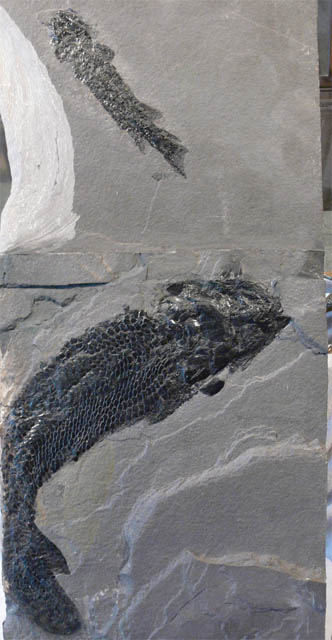
The eurypterids were the largest known arthropods that ever lived. They aremembers of the extinct class Eurypterida. The largest, such as Pterygotus,reached 2 m or more in length, but most species were less than 20 cm. Theywere formidable predators that lived in warm shallow water in the Cambrian toPermian from 510 to 250 million years ago. Eurypterids were the most fearsomeswimming predators of the Paleozoic. Although called "sea scorpions",only the earliest ones were marine (most became brackish or freshwateranimals), and they were not true scorpions. The typical eurypterid had a large,flat, semicircular carapace, followed by a jointed section, and finally atapering, flexible tail, with a long spine at the end. Some eurypterids havepaddles, which were used to propel themselves through water. They had fourpairs of jointed legs for walking, and two small claws at the front. Some species may have been amphibious,emerging onto land for at least part of their life cycle. They may have beencapable of breathing both in water and in air.
THE SILURIAN ERA © Henskens Fossils & John v. Straaten
Graptolites 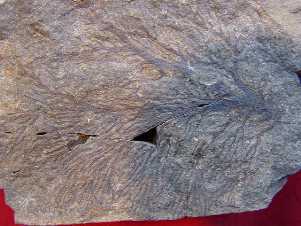
THE ORDIVICIAN ERA © Henskens Fossils & John v. Straaten
Cystoids 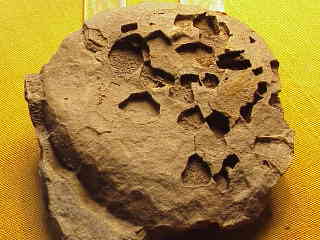
THE CAMBRIAN ERA © Henskens Fossils & John v. Straaten
Paradoxidesgracilis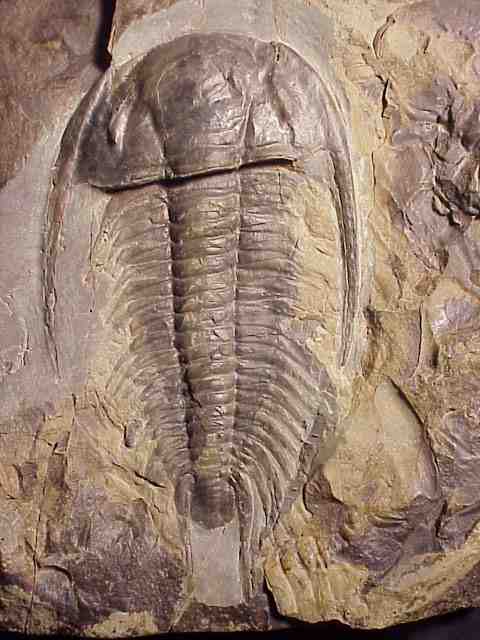
THE PRE-CAMBRIANERA © Henskens Fossils & John v. Straaten
Stromatolites